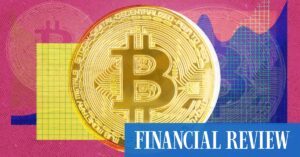Is Cardano’s ADA Treasury Bitcoin Shift a Smart Investment Strategy?

Charles Hoskinson Proposes Sovereign Wealth Fund for Cardano’s Future in DeFi
In a recent guest analysis, Shane Neagle, Editor in Chief at The Tokenist, discusses a bold initiative by Charles Hoskinson, co-founder of ethereum and founder of Cardano, aimed at enhancing Cardano’s position in the decentralized finance (DeFi) landscape.
The Vision Behind a Sovereign Wealth Fund
Sovereign wealth funds are often linked to national governments, exemplified by Norway’s Government Pension Fund Global (GPFG), which significantly contributes to the country’s budget. Initially fueled by oil revenues, this fund has diversified its portfolio to include global equities, bonds, real estate, and renewable energy investments. From 2019 to 2024, GPFG’s value surged from $996 billion to nearly $2 trillion.
Hoskinson envisions a similar strategy for Cardano, proposing to allocate 5-10% of the ADA treasury—approximately $1.2 billion—into more stable assets like bitcoin and stablecoins. This approach aims to generate returns that could be reinvested into ADA, potentially driving up its market value.
Rationale for the Sovereign Wealth Fund
This strategy is compelling for two primary reasons:
-
Economic Trends: The U.S. government’s tendency to overspend is likely to diminish the purchasing power of the dollar. bitcoin, with its limited supply and proof-of-work security, is increasingly viewed as a hedge against inflation. Unlike traditional stocks, bitcoin‘s value isn’t tied to earnings, making it an attractive asset for wealth preservation.
-
Stablecoin Dynamics: Leading stablecoins like USDC and USDT have substantial investments in U.S. Treasuries, generating demand for government debt. This relationship not only supports the U.S. economy but also helps maintain manageable yields on Treasuries.
Howard Lutnick, the current U.S. Secretary of Commerce, previously emphasized the importance of dollar dominance, expressing support for well-backed stablecoins.
Evaluating Cardano’s Current Performance
As of now, ADA has experienced a 35% decline this year but has seen a 56% increase over the past year. With a total supply of 45 billion ADA, approximately 35.36 billion are currently in circulation, leaving a significant amount that could impact prices if demand wanes. Cardano’s inflation rate stands at around 2%, aligning with the Federal Reserve’s target.
The treasury currently holds nearly 31% of ADA, with plans to convert a portion into bitcoin or stablecoins. As a proof-of-stake blockchain, Cardano allocates 80% of staking rewards to validators, reserving 20% for its treasury.
Potential Market Impact
Converting ADA into bitcoin or stablecoins could exert downward pressure on its price, given the inflation rate. However, Hoskinson proposes a gradual approach, utilizing over-the-counter (OTC) trading strategies to minimize market disruption. This method, similar to strategies employed by notable investors, aims to maintain ADA’s market stability.
In the long run, if the investments yield returns, they could be reinvested into ADA, akin to stock buybacks, potentially enhancing its value.
Assessing Cardano’s Demand Landscape
As a competitor to ethereum, Cardano was designed to be a more profit-focused blockchain. The completion of its smart contract capabilities marked a significant milestone, but it still lags behind in performance compared to leading platforms like Solana. Currently, Cardano ranks 34th in real-time transactions per second, with a finality time of two minutes, compared to Solana’s 12.8 seconds.
The fragmentation of the crypto market, coupled with the fallout from 2022’s bankruptcies, has left Cardano with only $267.5 million in DeFi applications, a stark contrast to Solana’s $8.3 billion and ethereum‘s $62.7 billion.
The Need for Stablecoin Integration
Stablecoins play a crucial role in enhancing the DeFi ecosystem. They provide a price anchor that can stabilize lending and borrowing activities, reducing risks associated with fluctuating interest rates. An influx of stablecoin liquidity could significantly boost Cardano’s decentralized application (dApp) activity, offering a safer alternative to speculative investments.
Currently, Cardano’s leading dApp, DexHunter, has the highest unique active wallets, while the lending platform Lenfi holds a mere $11.62 million in value, highlighting the need for increased activity.
Conclusion: A Strategic Move for Cardano
In late May, the ethereum Foundation secured $2 million in stablecoins from Aave, using wrapped ETH as collateral, showcasing a more advanced DeFi ecosystem that Cardano aspires to emulate. To achieve this level of maturity, Cardano must take decisive actions, such as reallocating part of its treasury into bitcoin and stablecoins. While this may seem to prioritize bitcoin over ADA, it reflects a broader strategy to enhance Cardano’s ecosystem.
As the current administration signals that stablecoins could serve as viable alternatives to a potential central bank digital currency (CBDC), Cardano has a unique opportunity to stimulate activity and growth without waiting for the completion of its scalability initiatives.







